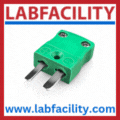
Posted to News on 15th Jun 2017, 12:42
Pacepacker robots deep dive into BDUs
The average human arm measures just 63.5 centimetres. This makes placing heavy loads of products into deep food Bulk Display Units (BDUs) challenging and subjects manual handlers to high risk of repetitive strain injuries. Torso twisting and bending to reach into low corners is especially hazardous when repeated throughout the working day.

With BDUs being an increasingly common sight on the retail shop floor nowadays - particularly within wholesale and supermarket fresh produce aisles -Pacepacker Services regularly recommends switching to a robotic option.
Combining palletising reach and payload with gentle case-loading end-of-arm tooling, these BDU robots are far less risk adverse, and can also significantly reduce product waste from bruising and damaged packaging, notes Pacepacker's Automation Solution Team Manager, Ian Merchant. Examining the basic physics of palletising and the torque required to support the weight being moved, robots provide the logical approach, and overcome the issue of poor body mechanics and risk of back strain.
Ian says: "If you compare the reach of the FANUC M410 robot, at 3.1 metres it's almost five times the reach of the average human arm. When working in a confined space, which most end-of-line palletising BDU cells are, moving shaped or unstable loads and excessive weights when stooping and twisting will increase the likelihood of workforce injuries. BDUs are typically 1 metre high by 1.2 metres in depth. Even with the front access gate open, reaching repeatedly into the back corners to place and layer sacks of potatoes or other root vegetables weighing anything from 2kg upwards will take its toll on even the strongest person's body. Yet, if you drop product in from a height, you increase the risk of product bruising leading to unhappy customers and consumers. Both these scenarios impact profitability."
Used in many palletising applications, the M410 robot can effortlessly handle anything from 25kg potato sacks, to tubs of animal feed and bales of pet bedding. Other robots, like the M20 or M710, can easily circumnavigate a 1m-unit wall and reach into the furthest and nearest corners.
The type of end effector used will vary by application. But with 80+ to choose from, including multifunctional tools, there are plenty of options. For bulky agricultural products, Pacepacker created a special cradle gripper and this is proven to work especially well for loading BDUs.
Opposing finger sections
Formed of two opposing finger sections, the grippers incline and taper to form a wedge. These fingers gently lower to cradle fresh poly bags of produce, delicately moving and placing them into BDUs. The tips of the gripper are rounded to prevent bags from being pierced. However, the motion of enveloping products in a cradle style is also designed to ensure the fingers don't penetrate bags.
During the release stage, the gripper is angled to rotate and adjust according to the depth and positioning within the BDU. For corner placement, the fingers closest to the wall open, gently sliding the bag down into position.
Ian notes: "Accurate product placement is an important feature of an automated BDU loading system. A well-stacked BDU will pack more in, ensuring retailers don't have to replenish as frequently."
The award-winning Essex-based company attributes the rise in bulk displays and their popularity to the recent success of low-cost supermarkets. Ian concludes: "We anticipate that the trend for BDUs will continue to grow as retailers look to drive greater cost efficiencies throughout their business. Even if packing needs change, a robot can swiftly be adapted to perform another palletising or case loading task."
Go to www.pacepacker.com for more information about palletising and case-loading robots.
X
X
GLOBAL


